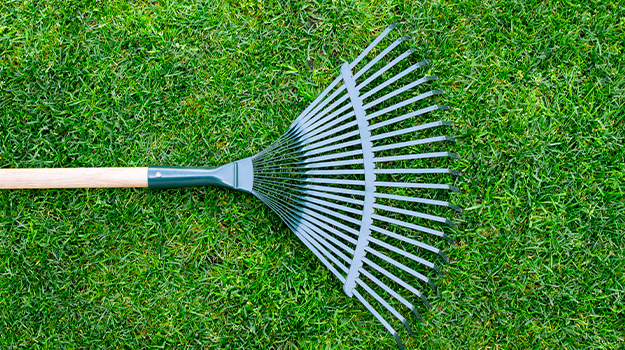
Now that winter is almost over, it’s time to put away the snow shovel and to look forward to greener times.
Here are 6 tips on stimulating and reviving your winter-weary lawn.
Mowers: Get the equipment ready. Bring in your lawn mower and trimmer for servicing early before the big rush. If you plan to do it yourself, best if you refer to the maintenance manual. If you use either gas, electric or manual push mowers or even riding mowers, one of the most important tasks is sharpening the blades. Sharp mower blades make a clean cut, while dull ones simply shred the tops and the outcome after a few days is browning of your grass blade tips, making your lawn look brown. So sharp blades!
Clean the Mess: As soon as the lawn is dry, rake! A good deep raking. Besides cleaning it of winter debris of leaves, branches, doggy do, etc., raking helps stimulate the lawn. You will be fluffing up matted or snow mold patches, thus letting air in. You will also be scratching up some of the thatch (undecomposed layer of grass), which is good. Too much thatch can block sunlight, air and water, and can harbor insects and diseases.
Patch Repair: You may find areas of your lawn that have succumbed to some form of winter kill, snow removal damage, pet spots, or just bare areas that you neglected to fix last fall. This is a good time to patch the lawn with soil and seed, or with a pre-mixed lawn patch repair product.
Fertilizing: Not too soon, though. In early spring, the grass plant invests its energy in root development. Fertilizing with a high nitrogen (first number on a bag of fertilizer, e.g., 30-0-3) at this early time will divert its energy from root to leaf development. And that creates a weaker lawn going into the summer. Instead, try using a lower nitrogen + seed combination product of fertilizer/seed/peat, like a 9-2-2 Thick & Quick. It gives an early gentle fertilizer charge while spreading seed over your existing lawn. Once the grass is growing and being cut regularly, you can apply a standard lawn fertilizer. Note: If you live on the East Coast, you probably need to increase your soil pH with lime, anytime in the spring. Fertilizing 3-4 times every season will provide a thick, healthy-looking lawn that will eventually choke out weeds without the use of pesticides.
Crabgrass Weeds: If you remember having crabgrass last year, but don’t see it now, that’s because crabgrass is an annual plant that goes to seed late in the summer and then dies off. The seeds, come spring, are laying on the ground, and if there is a bare area, those seeds will germinate and grow a new crop this season. The only way to prevent this germination is to apply a pre-emergent crabgrass control before temperatures reach 65 °F. Or wait until later when the crabgrass has emerged and manually pull it out. Caution: use of pre-emergent preventers will keep all seeds from germinating, and that includes grass seed. If using a preventer in the spring, you will have to wait until fall to do any grass seeding.
Broadleaf weeds: If you do not wish to have dandelions and other broadleaf weeds in your lawn, mid to late spring is the time to attack them. If there is a manageable number of weeds in your lawn, you can manually pull them or spot spray them. If your lawn is very weedy, you can broadcast spray the whole lawn, or use a weed & feed type of product.
Remember, it’s not just about having thick-looking grass: A lawn sequesters carbon, filters toxins out of rain water, eats CO2 and returns fresh oxygen to the air. It is soft to walk on bare foot, is 15-25 °F cooler than asphalt. It’s more than just a green patch.
